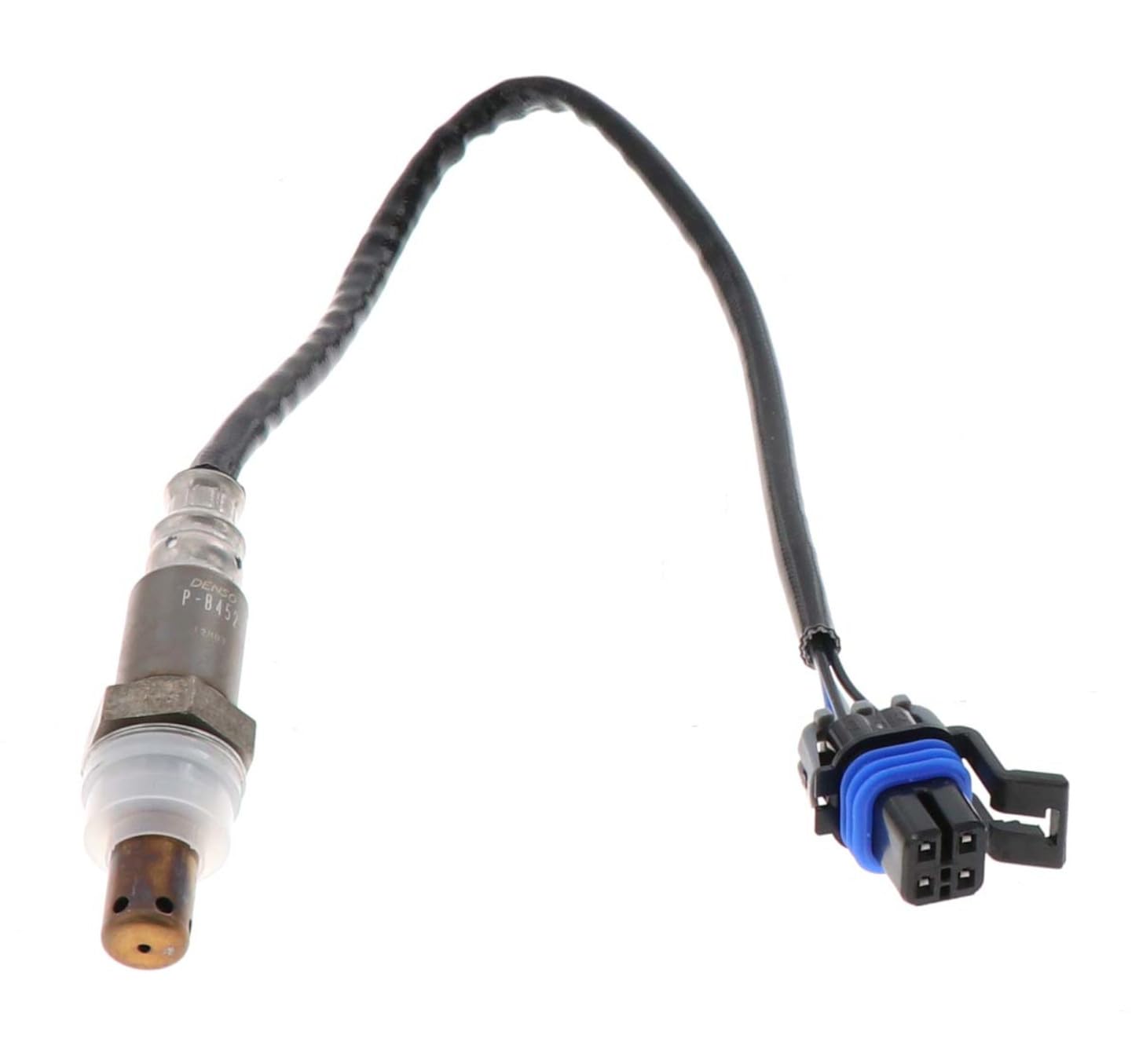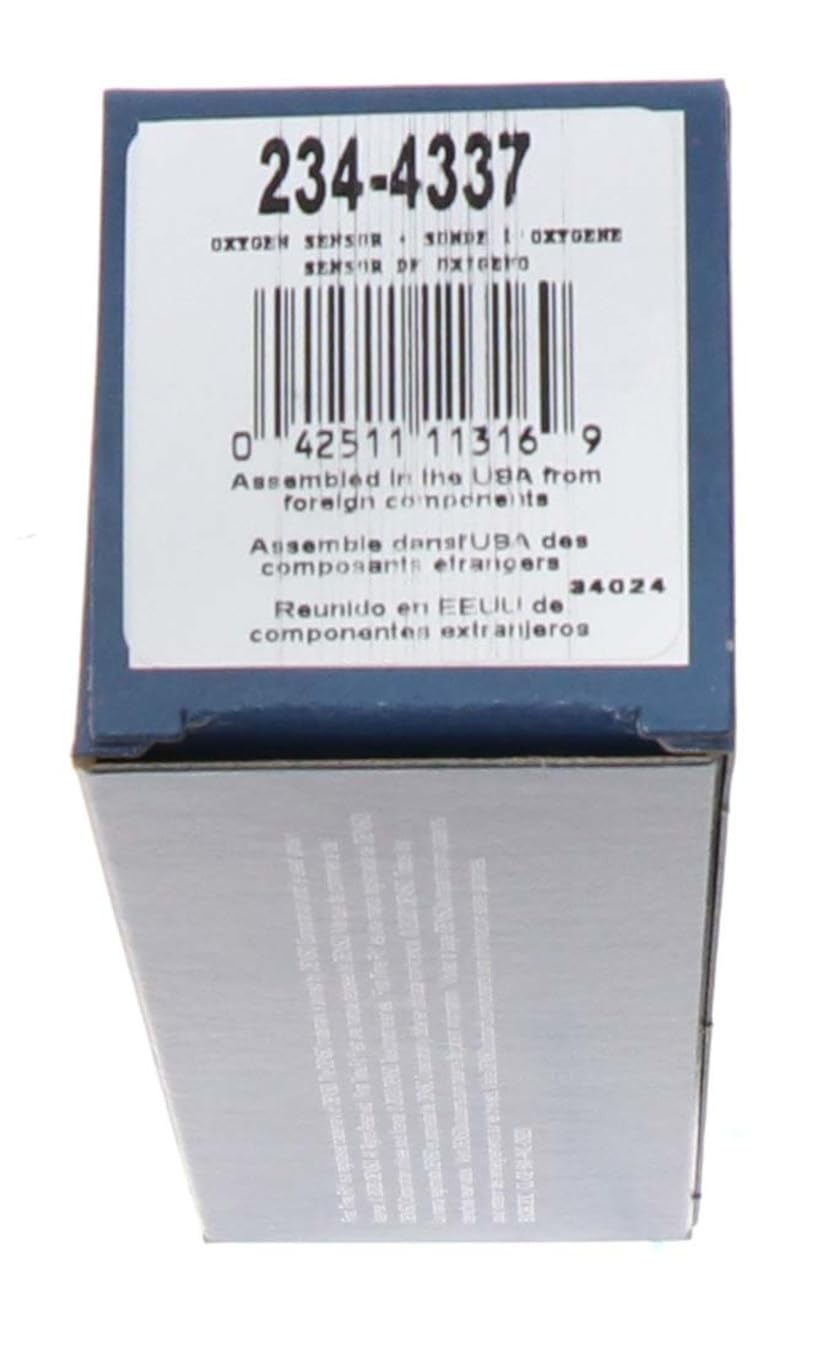### Descrição do Produto: Sensor de Oxigênio Denso 234-4337
O Sensor de Oxigênio Denso 234-4337 é um componente essencial para o sistema de gerenciamento de combustível do seu veículo, projetado para otimizar a eficiência do consumo de combustível e reduzir as emissões de poluentes. Este sensor é fundamental para garantir que a mistura de ar e combustível esteja sempre na proporção ideal, resultando em um desempenho superior do motor e economia significativa de combustível.
#### Principais Características:
– Eficiência no Consumo de Combustível: O Denso 234-4337 é projetado para monitorar com precisão os níveis de oxigênio nos gases de escape, permitindo que a unidade de controle do motor (ECU) ajuste a mistura de combustível de forma eficiente. Isso não apenas melhora a performance do veículo, mas também contribui para uma redução nas emissões, tornando-o uma escolha sustentável.
– Instalação Fácil: Com um design que prioriza a facilidade de instalação, o Denso 234-4337 pode ser montado rapidamente, economizando tempo e esforço. Este aspecto é especialmente vantajoso para mecânicos e entusiastas que buscam uma solução prática e eficiente.
– Construído com Material de Alta Qualidade: Este sensor é fabricado com materiais de alta qualidade que garantem durabilidade e resistência a condições adversas. A robustez do Denso 234-4337 assegura que ele funcione de maneira confiável por longos períodos, mesmo em ambientes severos.
– Fabricado com Precisão para Atender aos Padrões OE: O Denso 234-4337 é produzido com tecnologia de ponta, atendendo rigorosamente aos padrões de Equipamento Original (OE). Isso significa que você pode confiar na compatibilidade e no desempenho do sensor, sabendo que ele foi projetado para funcionar perfeitamente com seu veículo.
### Instruções de Uso:
Para instalar o Sensor de Oxigênio Denso 234-4337, siga os passos abaixo:
1. Desconecte a Bateria: Antes de iniciar a instalação, desconecte a bateria do veículo para evitar qualquer curto-circuito.
2. Localize o Sensor: O sensor de oxigênio geralmente está localizado no coletor de escape ou no tubo de escape. Consulte o manual do veículo para a localização exata.
3. Remova o Sensor Antigo: Utilize uma chave de soquete para remover o sensor de oxigênio antigo. Certifique-se de que a área esteja limpa e livre de detritos.
4. Instale o Novo Sensor: Coloque o Denso 234-4337 no lugar do sensor antigo e aperte-o com a chave de soquete. Não exagere na força para evitar danos.
5. Reconecte a Bateria: Após a instalação, reconecte a bateria e ligue o veículo para verificar se o sensor está funcionando corretamente.
### Características do Produto:
– Modelo: Denso 234-4337
– Tipo: Sensor de Oxigênio
– Compatibilidade: Projetado para uma ampla gama de veículos, consulte a lista de compatibilidade.
– Material: Alta qualidade, resistente a altas temperaturas e corrosão.
– Padrões: Atende aos padrões de Equipamento Original (OE).
– Conexão: Conector padrão para fácil instalação.
### Perguntas Frequentes (FAQ):
Pergunta: O Denso 234-4337 é compatível com meu veículo?
Resposta: O Denso 234-4337 é compatível com uma ampla gama de veículos. Consulte a lista de compatibilidade ou o manual do proprietário para confirmar.
Pergunta: Como sei se meu sensor de oxigênio precisa ser substituído?
Resposta: Sinais de que o sensor de oxigênio pode precisar ser substituído incluem aumento no consumo de combustível, falhas no motor e luz de verificação do motor acesa.
Pergunta: A instalação do Denso 234-4337 requer ferramentas especiais?
Resposta: Não, a instalação pode ser feita com ferramentas básicas, como uma chave de soquete. Siga as instruções de instalação para garantir um processo tranquilo.
Pergunta: Qual é a vida útil esperada do sensor de oxigênio Denso 234-4337?
Resposta: A vida útil do sensor pode variar, mas geralmente é projetada para durar entre 60.000 a 100.000 km, dependendo das condições de uso do veículo.
Pergunta: O que fazer se a luz de verificação do motor continuar acesa após a instalação?
Resposta: Se a luz de verificação do motor permanecer acesa após a instalação, é recomendável realizar um diagnóstico para verificar se há outros problemas no sistema de gerenciamento do motor.
 Frete Grátis em todos os produtos
Frete Grátis em todos os produtos














Amazon Customer –
Recently purchased a 2006 Sierra with roughly 174,000 mi on it Great running truck the engine strong but unfortunately she started to develop weird issues of idling and I noticed the gas mileage was decreasing slightly brought into the shop they suggested tune up with O2 sensors do the work myself because well times are tough use the part numbers they supplied that they claimed for the general motors original equipment supplier I believe it because truck runs great again and I mean it runs great! The quality of the sensor is fantastic The feminine is dead on and as long as you have a little patience they are very easy to replace.
Ulibuilt01 –
Worked great no codes smooth running truck.
Florencio Cabrales –
It fit my 2007 Chevrolet Silverado Classic 4.8 4 door crew cab
Amazoner –
الهمر اتش٢ عنده اربع حساسات. حساسين نفس هذا النوع وحساسين اخرين يركب عليهم حساس اليوكن موديل ٢٠١٠ اللي فيشه بيج وذكر وليس انثى ولكن سلكه نوع ما اقصر ولكنه يركب بالضبط. انتبه ان كل حساسات الهمر من نوع ذكر
Rob –
Just put 2 upstream on my 2006 Tahoe. I used an adjustable end wrench as there is room on my SUV, but only barely on the passenger side. Access not too bad, drivers side easy to get to the sensor, hard to get to the plug. Passenger side harder to get to the sensor but easier to get to the plug. Replaced both though the code indicated bank 1. Mine were original with 167k miles. I’ll change the down stream next. Reset the engine light and so far runs great, no engine light. I think these are a good price. Came with anti seize as well. Plug fit as expected. Took me a little less than an hour.
Amazon Customer –
Worked great
zlh5009 –
I purchased these to “freshen up” my fuel mileage when my truck had about 136k miles on it. They were the original equipment upstream oxygen sensors for my 2006 Chevy Silverado 1500 LT. I was surprised, because I thought it would have had AC Delco O2 Sensors in it. Not the case. These were identical to the ones I pulled out of it.
All in all, it was a very easy switch. I rolled under the truck right behind the front wheels, and found each sensor screwed into the exhaust pipes just above the catalytic converters. A 7/8″ wrench got the old ones loose with a couple turns, and I could take them out the rest of the way by hand. I followed the wires back to the connectors, one was over the top of a body crossmember (easy to get to) and the other one was situated next to the transmission (a little trickier.) To unplug the old ones, I had to remove a plastic locking tab from the tongue of the connector before they would unsnap.
Installing the new ones was easy. They each came with an ample amount of anti-seize compound to keep them from rusting in. With a little of that smeared on the threads, they screwed in easily and tightened very securely. The pigtails on these snapped into the truck’s connectors perfectly, and I even replaced the locking tabs.
The difference was nearly instantaneous. My fuel trims went from averaging 3.9% back to averaging 0% long term. I also got back about 3 mpg that I had been missing for a while, and a little more power. All in all, it was a great choice buying these.
Also, its worth knowing that the ones I took out were also Denso brand- they had 136,000 miles on them, and they were still going. The engine hadn’t thrown a code, and the sensors still worked. They were just sluggish and a little old, and I decided it was time to replace them. So, I’m very comfortable replacing them with identical ones – as far as I’m concerned, I don’t mind putting these in every 150k or so, especially when they pay for themselves within 7 tanks of gas.
I would highly recommend these to anyone who drives a high-mileage vehicle and has noticed that it doesn’t perform quite as well or get the mileage it used to. These may or may not fix the entire problem, but they *will* prevent you from dumping too much fuel into your cat and plugging it, which is a much more difficult fix than this 🙂
Raymond Kidwell –
This came up as fitting my Suzuki Burgman 400 cc scooter. Amazon did not have the Suzuki brand oxygen sensor. With the bad sensor I was losing horse power and a trip that normally takes 1/8 of a tank of fuel would take about half a tank. I was getting insane fuel mileage with the oem (like 60 mpg). First of all the wire on here is not the same as the oem wire for suzuki. I had to shove it and force it together. Apparently it worked. The word “fits” is used rather loosely. My horsepower was restored but not all my fuel mileage. A 1/8 tank trip ow takes about 1/4 of a tank. It’s an improvement on the bad sensor for sure, but this seems to be an el cheapo replacement. If you spend more money and order the oem part you are going to get better fuel mileage.
fawaz alshamsi –
Excellent works
JPar –
Not over priced. It fit properly and works great.